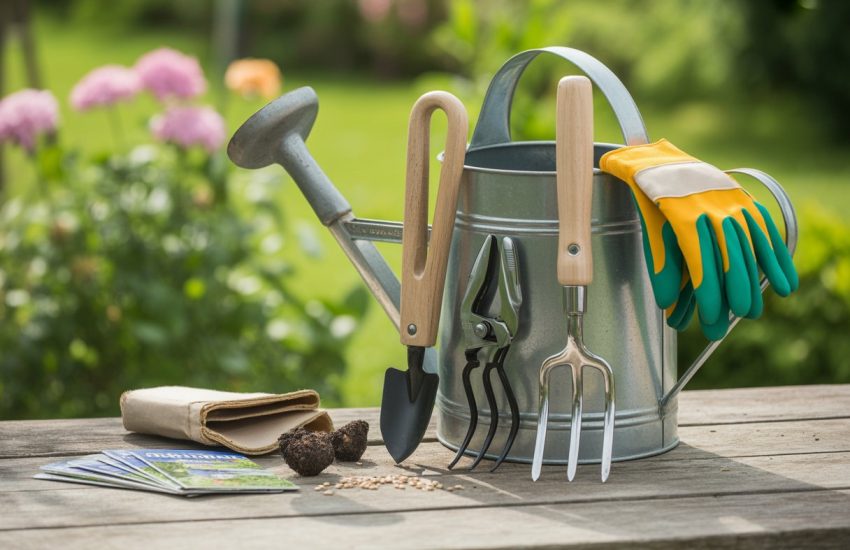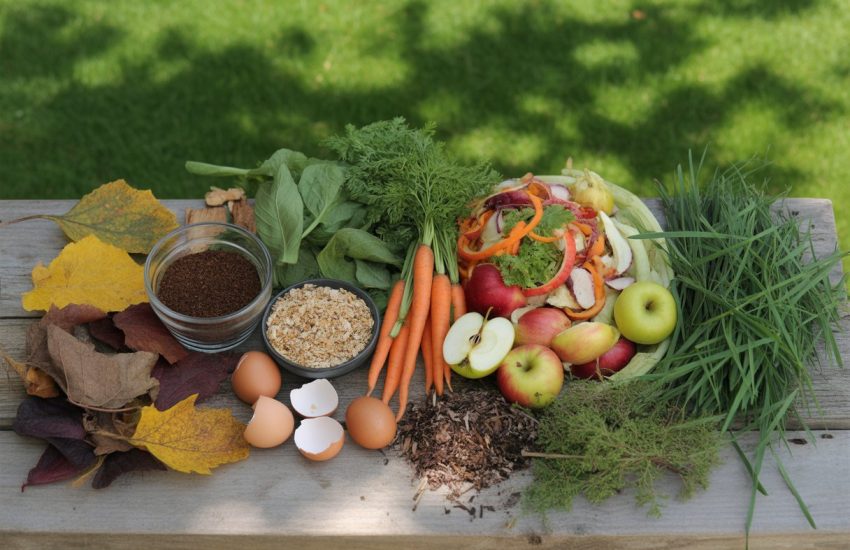When to Plant Native Raspberry in North Carolina Best Seasonal Timing and Tips
Native raspberries, part of the genus Rubus, really do best when you plant them at just the right time for North Carolina’s climate.
If you know the right window, you’ll help them grow stronger and fruit better, plus they get a head start before the weather turns rough.
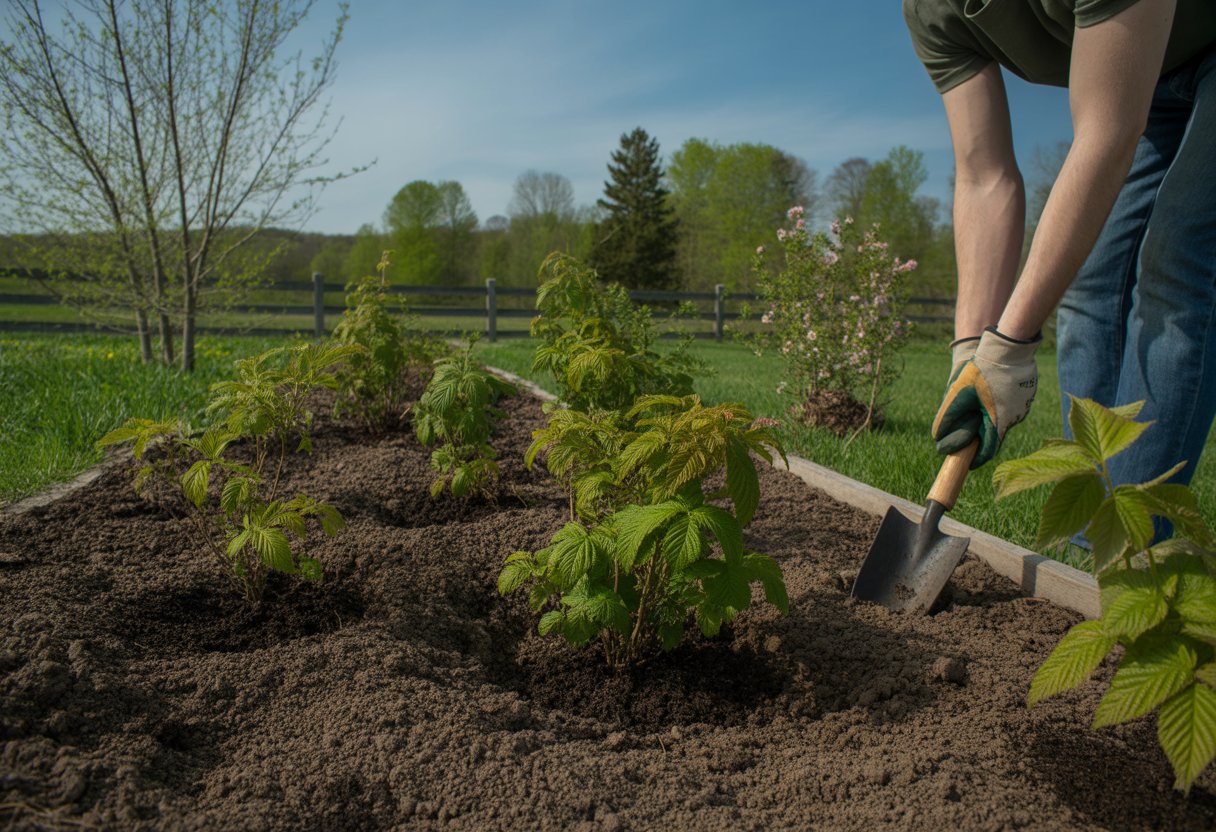
The optimal time to plant native raspberries in North Carolina is in early spring, after the last frost, or in late fall when the plants are dormant. Give them this timing, and you’re setting them up to develop solid roots and adjust to local conditions before things heat up.
As native plants, raspberries respond to the region’s unique soils and weather patterns. If you plant when recommended, you’ll get the most out of North Carolina’s environment and probably enjoy a much more successful raspberry patch.
Optimal Timing to Plant Native Raspberries in North Carolina
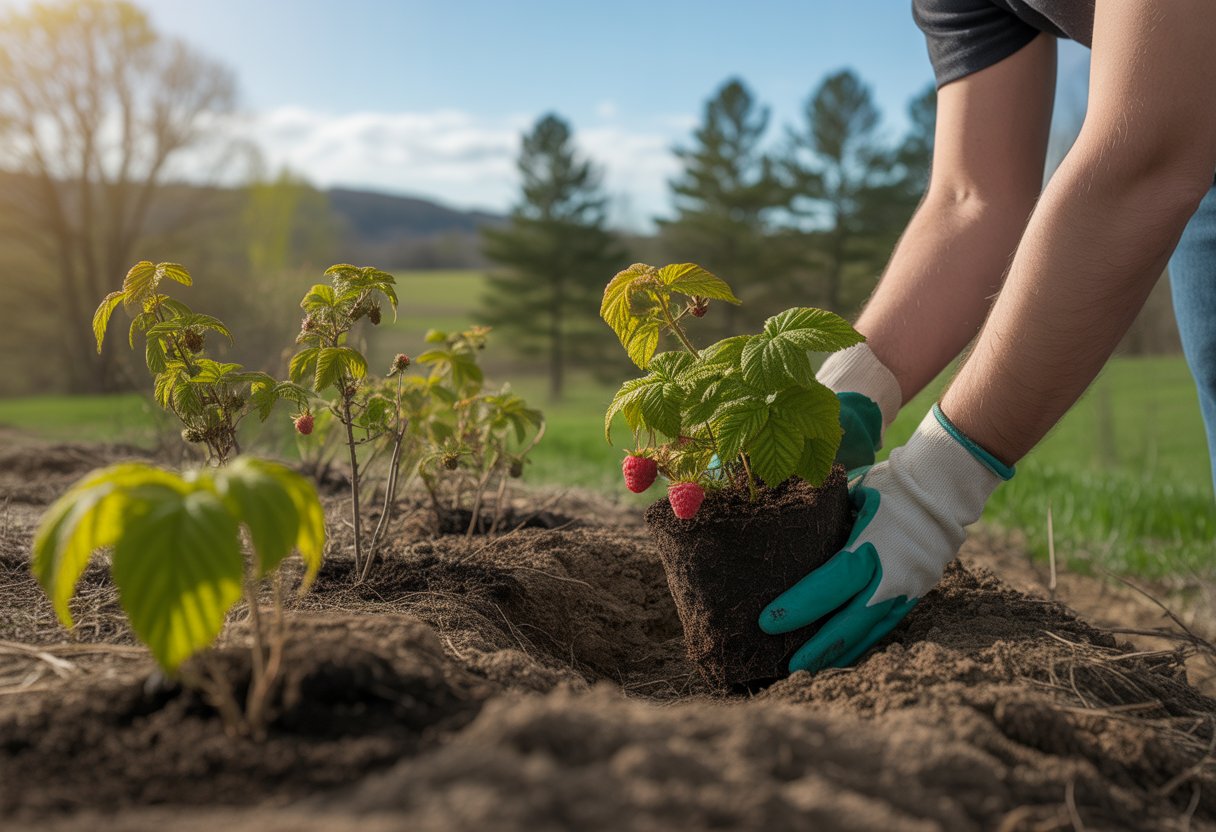
Native raspberries really respond to timing in North Carolina—climate, frost dates, and local quirks all matter. It’s especially true for favorites like ‘Carolina,’ ‘Anne,’ and ‘Heritage.’
Best Planting Seasons and Climate Considerations
Early spring and late fall are the best seasons to plant native raspberry varieties here. If you plant in early spring, the plants can settle in and send roots down before summer heat arrives.
Fall planting works too, as long as the soil stays above 50°F. That way, roots grow without pushing top growth, which is ideal.
Try to avoid midsummer heat and times when frost might hit. Well-drained soil and a sunny spot make a big difference for berry yields and healthy plants.
Frost Dates and Temperature Guidelines
Plant native raspberries after the last spring frost to protect those tender shoots. In North Carolina, that’s usually somewhere between March 15 and April 15, depending on where you are.
Raspberries can handle temps down to 20°F, but late frosts after buds open can spell trouble. Black raspberries might need a little extra care if a cold snap threatens.
Make sure your soil is at least 45°F before planting. If you keep an eye on local frost dates and check the soil, you’ll pick the best time to plant.
Regional Variations Across North Carolina
The state’s different climate zones change up the timing. Coastal areas, with their milder winters, let you plant earlier—sometimes by mid-March.
In the Piedmont, you’re looking at late March or early April. The mountains, with colder springs, are better for fall planting—usually mid-October to early November.
Varieties like ‘Heritage’ do well all over but really hit their stride when you match planting to local frost and soil patterns. Picking the right spot and prepping it well matters everywhere.
Site and Soil Preparation for Healthy Raspberry Growth
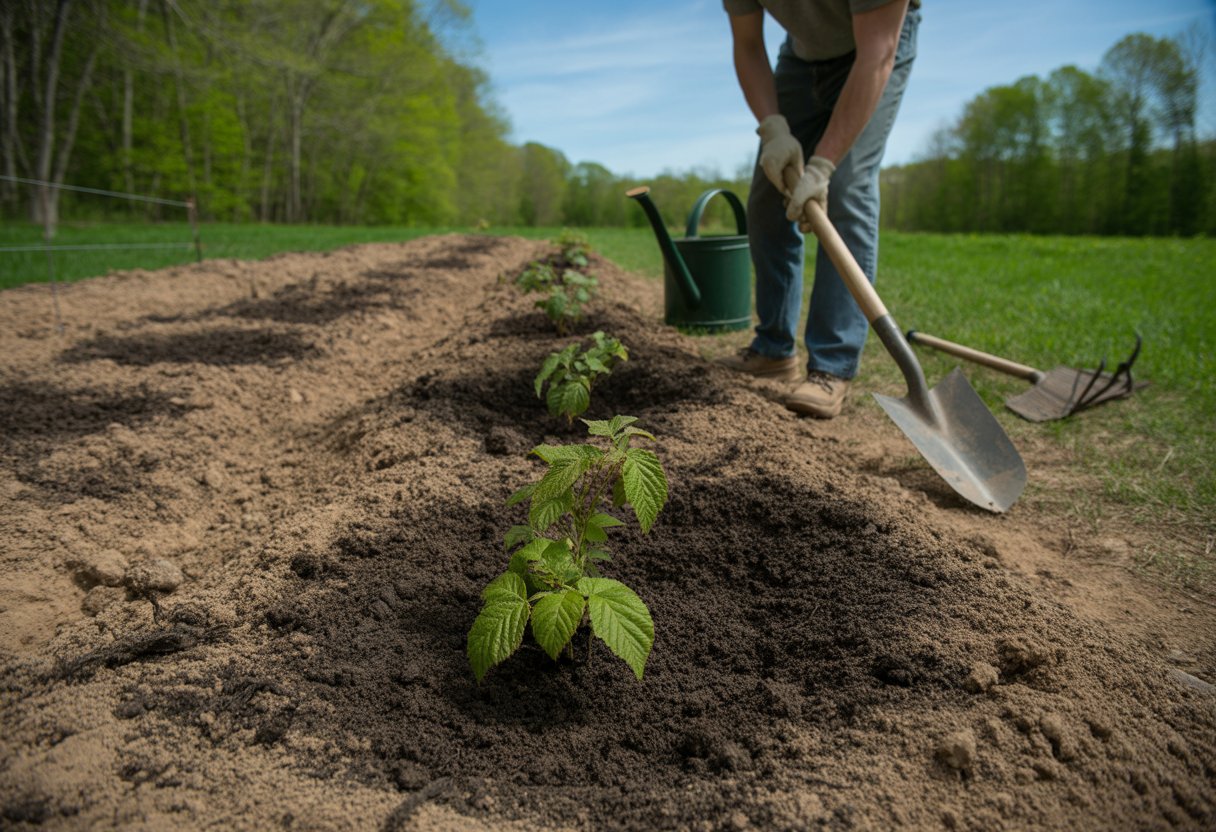
Getting your site and soil right is huge for native raspberries in North Carolina. Focus on pH, organic matter, and keeping weeds out for the best shot at happy plants.
Selecting the Right Site and Soil Type
Native raspberries love full sun, but they’ll take a little shade. Good air flow helps keep disease down, and you want to skip low spots that get frosty or soggy.
Go for well-drained, loamy soil—avoid heavy clay or sand that holds too much or too little water. Black raspberries can handle a bit more shade than red ones, but red raspberries need all the sun they can get for top fruit.
Before planting, clear out weeds and old brambles. It’s worth the effort—less competition means happier, healthier canes.
Improving Soil pH and Organic Matter
Raspberries like their soil slightly acidic, right around 5.5 to 6.5 pH. Test your soil first to see where you stand.
If your soil’s too acidic, add lime to bring the pH up slowly. If it’s too alkaline, you can use elemental sulfur, but do that well ahead of planting to give it time to work.
Mix in plenty of compost to boost structure and hold water and nutrients. A couple of inches of compost tilled into the top few inches of soil works wonders. After planting, toss some mulch on top to lock in moisture and keep weeds down.
Raised Beds and Container Planting
Raised beds can be a lifesaver if your soil is heavy or compacted. Build them 8 to 12 inches high and fill with loose, rich soil.
If you don’t have much space or your soil’s just not great, container planting works too. Pick big containers—at least 18 inches deep—and use a well-draining potting mix with compost mixed in.
Keep up with watering and feeding in containers, as they dry out and lose nutrients faster. Mulching the top of the container helps keep things cool. Both raised beds and containers can make a big difference in tough spots.
Essential Care and Maintenance for Native Raspberry Plants
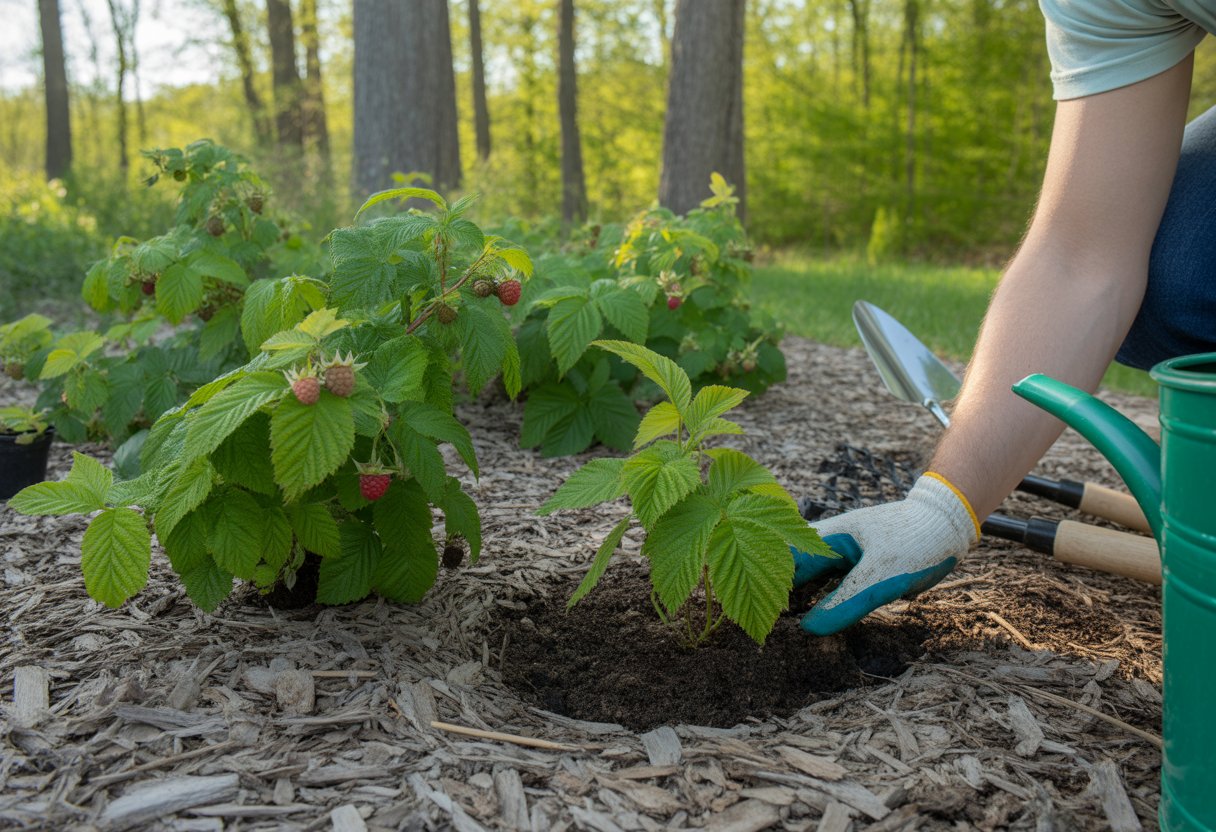
Native raspberry plants need steady care—water, soil, and support all matter if you want them to thrive in North Carolina. Watering, mulching, feeding, and pruning all play a role in healthy, productive plants.
Watering and Mulching Practices
Raspberries need deep, steady moisture, especially when they’re fruiting from late spring through summer. Aim for about 1 to 1.5 inches of water a week, and water at the base to keep leaves dry and avoid disease.
Mulch with 3 to 4 inches of organic stuff like straw or shredded leaves. It keeps soil moist, evens out temperature swings, and cuts down on weeds. Plus, mulch helps roots stay cool and keeps the soil structure in good shape.
Fertilizing and Soil Amendments
Feed your raspberries in early spring to push strong new canes and good fruiting. Use a balanced fertilizer—something close to 10-10-10—at about 1 to 2 pounds per 100 square feet.
Mixing in compost helps drainage and adds nutrients, which keeps disease at bay. Test your soil before planting so you can tweak pH and nutrients for the best results.
Pruning and Training Techniques
Prune out weak or dead canes to boost airflow and fight off disease, no matter if you’re growing thornless or thorny types. After harvest, cut back floricanes (the ones that fruited), and train primocanes for next year.
A simple trellis system helps keep canes upright and grabs more sun. Training canes on wires makes maintenance easier and helps with space. Good pruning and training also cut down on pests and help you get bigger, healthier berries.
Harvesting and Maximizing Fruit Quality
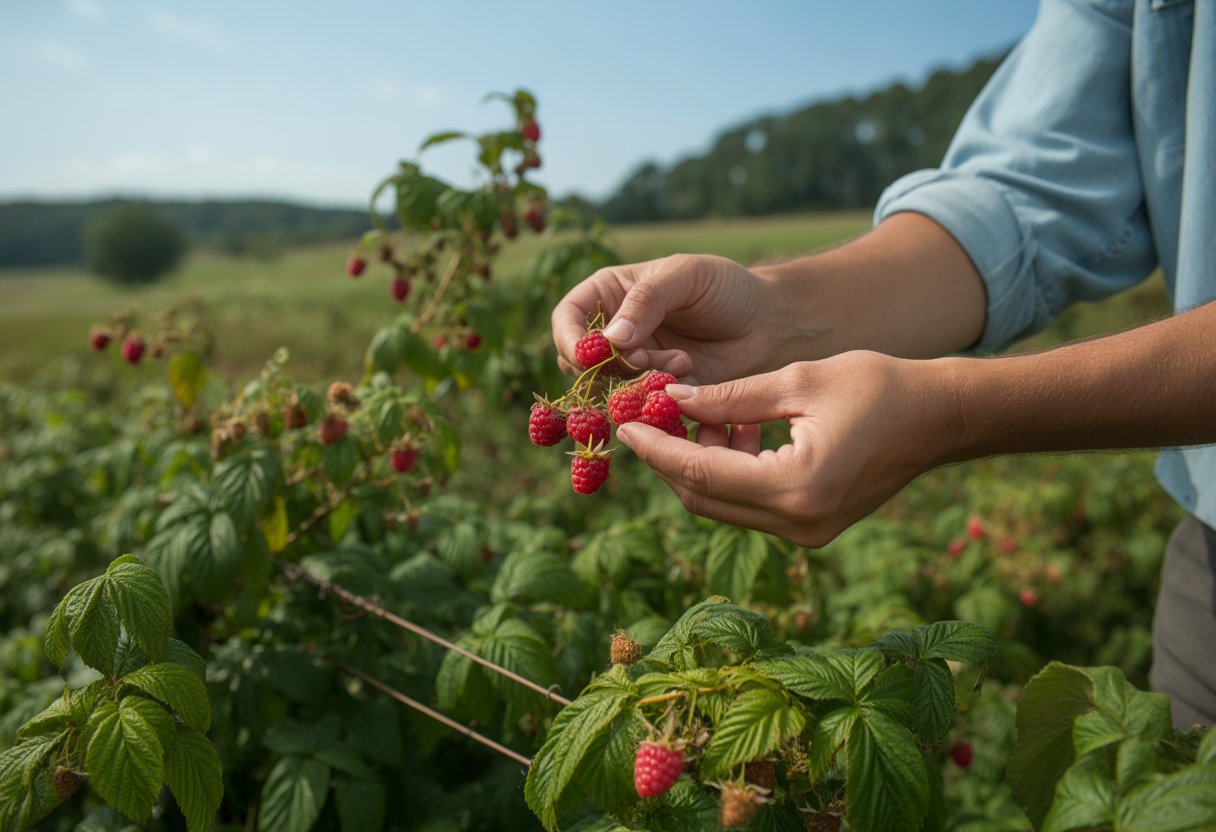
Native raspberries in North Carolina need a little timing and care to give you sweet, juicy fruit. Harvesting at the right moment, watching out for disease, and making sure pollinators can do their thing all make a difference in berry quality.
Timing and Techniques for Harvesting
Start picking when berries have deep color and come off the plant with a gentle tug. If you pick too early, you’ll get tart, small fruit; too late and they get mushy or damaged.
Ripe berries are bright red or black, depending on the type, and should feel firm but not hard. Try to harvest every couple of days during peak season to keep quality up and avoid overripening.
Handle fruit gently—bruised raspberries lose juice and shelf life fast. Use shallow containers to prevent crushing. Most harvests run from late spring to early summer, but it shifts a bit with local weather.
Managing Diseases and Pests
Raspberries here are prone to fungal issues like verticillium wilt, which can sap plant strength and cut berry yields. Watch for yellow leaves or wilting tips and act early.
Crop rotation, pulling out sick canes, and keeping plants pruned for air flow all help with disease control. Sometimes you’ll need fungicides in wet spells, but always follow the directions.
Keep an eye out for pests—bugs can damage fruit or spread problems. Healthy, well-fed plants resist pests better. Starting with a clean site cuts down on future trouble and helps you keep the berries coming.
Pollination and Berry Production Factors
Native raspberries usually pollinate themselves, but insects can really boost berry size, sweetness, and overall quality. Bees do most of the work here, so creating pollinator-friendly environments definitely helps.
Raspberries bloom in spring. When they get enough pollination, you’ll notice more berries and better development.
If pollination falls short, you end up with smaller, odd-shaped berries that just aren’t as sweet or juicy. Nobody wants that.
Temperature, sunlight, and soil quality all play a role, too. Give your plants plenty of sun and well-drained soil—those two things make a real difference for bigger, tastier raspberries.

